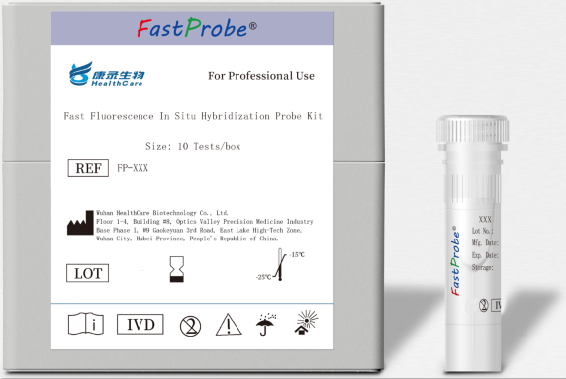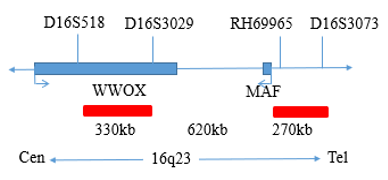IVD - FP233 IGH/MAF Gene Fusion Probe Detection Kit

Cat.# FP-233-2: IGH/MAF Gene Fusion Probe Detection Kit (IVD)
[Overview]
MAF (MAF BZIP Transcription Factor) protein encoded by this gene is a DNA-binding, leucine zipper-containing transcription factor that acts as a homodimer or as a heterodimer. Depending on the binding site and binding partner, the encoded protein can be a transcriptional activator or repressor. This protein plays a role in the regulation of several cellular processes, including embryonic lens fiber cell development, increased T-cell susceptibility to apoptosis, and chondrocyte terminal differentiation. Defects in this gene are a cause of juvenile-onset pulverulent cataract as well as congenital cerulean cataract 4 (CCA4). Two transcript variants encoding different isoforms have been found for this gene. [provided by RefSeq, Jan 2010].
Immunoglobulins recognize foreign antigens and initiate immune responses such as phagocytosis and the complement system. Each immunoglobulin molecule consists of two identical heavy chains and two identical light chains. This region represents the germline organization of the heavy chain locus. The locus includes V (variable), D (diversity), J (joining), and C (constant) segments. During B cell development, a recombination event at the DNA level joins a single D segment with a J segment; this partially rearranged D-J gene is then joined to a V segment. The rearranged V-D-J is then transcribed with the IGHM constant region; this transcript encodes a mu heavy chain. Later in development B cells generate V-D-J-Cmu-Cdelta pre-messenger RNA, which is alternatively spliced to encode either a mu or a delta heavy chain. Mature B cells in the lymph nodes undergo switch recombination, so that the V-D-J gene is brought in proximity to one of the IGHG, IGHA, or IGHE genes and each cell expresses either the gamma, alpha, or epsilon heavy chain. Recombination of many different V segments with several J segments provides a wide range of antigen recognition. Additional diversity is attained by junctional diversity, resulting from the random addition of nucleotides by terminal deoxynucleotidyltransferase, and by somatic hypermutation, which occurs during B cell maturation in the spleen and lymph nodes. Due to polymorphism, the numbers of functional V, J, and D genes differ among individuals and some V, D, J, and C segments may be pseudogenes. [provided by RefSeq, Dec 2017].


[Download] IGH/MAF Gene Fusion Probe Instructions
[Download MSDS] MSDS

